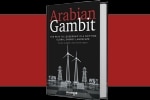Increase capacity while building resilience
Aviation is a dynamic, constantly evolving industry. Maintaining safe and efficient operations — while navigating deregulation, modernization, competition, digitization, and global shocks — requires a bold, innovative approach.
Airlines, aviation authorities, and other industry stakeholders who seek to improve safety, boost revenues, lower costs or build customer loyalty need comprehensive strategies to keep pace with consumer expectations and build resilience against uncertainty.
Why Strategy&
Winning in the aviation industry can be an overwhelming challenge. Strategy& integrates sector-specific knowledge and functional expertise to deliver achievable strategies that generate sustainable value.
Aviation sector leaders turn to Strategy& for guidance in operational and cost optimization, organic growth and acquisition, privatization and corporatization, governance and operating models, transformation programs and digital innovations.
How we can help you

Growth across the region: Case studies from the Gulf
Civil Aviation Authorities
Defining a liberalization and deregulation strategy
A civil aviation authority (CAA) needed to develop a liberalization strategy. The situation was complicated by several economic distortions, including a subsidized and inefficient domestic aviation sector and the rise of hub airports in nearby countries.
Strategy& analyzed trends and forecast multiple scenarios for traffic and route economics. We then developed a liberalization strategy, aviation-sector objectives, and a process for public consultation.

Developing an investment strategy for an air transport sector
Facing several regulatory, organizational, and financial challenges, a leading GCC CAA retained Strategy& to help improve its financial and operational performance. The client specifically requested the transformation program be benchmarked against global international best practices.
After identifying performance gaps and issues, Strategy& defined a transformation plan that included five-year initiatives, key performance indicators, and target goals to put the CAA on track, both financially and operationally.

Optimizing financial performance
Forecasted deficits, increasing staff costs, dependence on air navigation service provider (ANSP) revenues, and a lack of financial processes and controls plagued operations for a major GCC CAA. To help the client achieve profitability, Strategy& provided a comprehensive blueprint for optimizing financial performance, including strategies for enhancing revenue structure and reducing costs.
This plan equipped the CAA with the right tools to manage financial performance and protect its revenue in advance of a planned separation from the ANSP.

Creating a strategy for a newly established CAA
A Middle East country experienced double-digit annual growth in flight movements and passenger traffic. However, an outdated regulatory structure, lack of overarching strategy and processes and the absence of an independent aviation authority hampered the country’s ability to respond to the exponential growth of its aviation sector.
Strategy& defined a new institutional set-up for a CAA, defined strategic objectives and initiatives, developed project charters, created a program management office and drafted enactment law for the new authority. These recommendations enabled strategic operational scaling to keep pace with growth.

Air Navigation
Supporting an ANSP with strategic and financial planning
An ANSP in the Middle East engaged Strategy& needed to develop the civil aviation sector and civil aviation law.
After assessing international best practices and alternative ANSP development options, employment, investments, service and price levels, Strategy& created effective, scenario-driven strategic, financial and implementation plans. We also developed an institutional framework that tailored the speed and degree of liberalization to maximize the ANSP’s contribution to the national economy.

Guiding expansion into non-regulated services
A GCC ANSP sought to diversify its revenue streams by expanding its service offering into non-regulated businesses.
Strategy& identified six potential nonregulated services and developed a business case for each. We provided a blueprint for operationalizing the new services, enabling the ANSP to confidently enter into discussions with potential partners in the regional aerospace and defense sectors.

Achieving self-sufficiency with organizational strategy
A newly created, independent CAA wanted to promote sector deregulation and achieve commercial orientation and self-sufficiency.
Strategy& collaborated with the client to identify and design a target model, a detailed organization structure — including regulations, air navigation, and the country’s 27 airports — and a workforce resource plan. Following the plan’s implementation, the authority successfully and cost-effectively supported deregulation while enhancing the business potential of its airport assets.

Airline Assets
Identifying airline growth opportunities
Despite enjoying rapid growth since its inception, a major airline in the Middle East struggled to achieve its profitability targets.
After conducting a deep dive into the airline’s competitive positioning and financial, business, and governance models, Strategy& developed an enriched business model including opportunities for cargo, distribution and operational activities. A strategic framework for creating the optimal aviation group structure and prioritizing opportunities put the airline on a clear path for meeting its profitability mandates.

Designing a corporate structure for a mid-size GCC airline
Despite significant growth in transport and aviation-related services, a national carrier for a Middle East country remained unprofitable. A lack of clear vision and strategies, combined with limited independence and accountability, created significant hurdles to financial optimization.
Strategy& engaged the client to articulate a new strategic focus and establish a new operating model, organization structure and a governance framework. Driven by 22 initiatives, prioritized over a five-year period, this corporate restructure program enabled rapid yet intentional transformation.

Supporting a European acquisition with due diligence
To meet profitability and growth targets, a leading Middle East network carrier identified a European airline and travel operator as a key acquisition.
In preparation for the acquisition, Strategy& identified and assessed USD$100 million in synergies and USD$300 million in economic benefits. In addition, we equipped the client with a standard approach and toolkit for conducting future due diligence.

Developing a five-year plan for restructuring
Following substantial losses across an airline network, compounded by the shock of COVID-19, a national aviation group holding company overseeing the airline as well as airports and aviation services needed a five-year restructuring plan to achieve financial sustainability.
After evaluating numerous options and scenarios, Strategy& provided a comprehensive roadmap, including a revised network and fleet plan, to return the group to financial sustainability in year two and the airline to financial sustainability by year four.

Airports
Supporting a shift to a customer-centric culture
A major Middle East government had seen strong sustained growth in its aviation sector. However, difficulties at the ‘home’ flag carrier, regional competition and potential facility enhancement initiatives complicated the sector’s outlook. To maintain a competitive advantage, the country’s airport required a shift from a civil service–oriented culture to one that was customer-centric and commercially driven.
Strategy& designed an organizational model, airport strategy, entity structure, priorities and recommendations for near- and medium-term process improvements to support this transformation.

Maximizing the value of a newly privatized airport corporation
A newly privatized airport corporation needed to maximize value. Strategy& created an airport system and operations plan, unlocked new value sources and developed a portfolio approach for financial performance. The effort clarified the airport’s strategic direction and revealed opportunities to achieve a three-fold increase in shareholder value.

Creating a free-zone business plan
A major airport in the GCC wanted to maximize returns on 10 square kilometers of unused free-zone land. The airport lacked a target focus for growth, differentiators to attract and retain tenants and a funding strategy for expansion.
Strategy& provided a clear-cut plan to transform the free-zone space into a highly competitive development. We identified potential land uses and target industry clusters, concept options and value propositions, as well as 10-year financial and implementation plans. In addition, we developed a funding strategy and supported early efforts to attract free-zone anchor tenants.

Ground operations and MRO
Corporatizing of a ground-handling business unit
A leading GCC entity needed help corporatizing its ground-handling business unit to enhance efficiency, become competitive and achieve financial sustainability.
Strategy& developed a vision and strategy for the ground-handling company, a framework for splitting ground-handling functions from cargo and the airline and a governance framework to enable the unit to stand on its own. To support implementation, we provided a comprehensive roadmap with activities, timelines, resources and risk-mitigation actions.

Reorganizing ground handling of a flag carrier
A Middle East flag carrier decided to go private by reorganizing itself under six units, including ground handling.
Strategy& created a plan to optimize the organization of the unit and determined which activities the unit should take over from the airline’s corporate core. The identification of key management processes, the associated authority matrix and key performance indicators provided a roadmap for successful and efficient ground-handling operations.

Benchmarking and productivity improvement
An international airline with a dominant market position and consistent profitability growth struggled with a large fixed-cost structure and engineering and below-par maintenance performance. Despite several performance improvements, costs continued to soar.
Using both top-down and bottom-up estimates, Strategy& identified a 25-30% improvement target. Our analysis uncovered opportunities to further reduce engineering and maintenance costs by more than 20%. These initiatives helped stop increases in total costs and significantly reduced costs per block-hour.

Supporting a joint venture between a maintenance provider and a manufacturer
A study conducted by Strategy& identified several opportunities for a Middle East country to improve military aircraft operations through consolidation and workforce planning and allocation. As part of this effort, the country’s national development agency wanted to establish a joint venture with international aircraft original equipment manufacturers (OEM) to manage maintenance for all military aircraft.
Strategy& helped define foundational company initiatives, including the potential addressable market, operating and business model, organization structure, job descriptions, key performance indicators, cost structure and an investment and financial plan. Following this effort, the national agency and OEMs signed a joint-venture agreement and launched the implementation.

Transforming the maintenance function of a royal carrier
A dedicated royal carrier in the GCC region struggled to maintain a highly customized but aging fleet, manage significant variability in demand and reservation patterns and operate under multiple delivery models.
Strategy& streamlined a single model that maximized aircraft availability and reliability. We recommended an optimal organization design and defined a unified IT infrastructure and key performance indicators to effectively support the transformation. A key recommendation — the creation of a ‘seven-star’ service for VVIP customers — set the airline apart from the competition.

Air Cargo
Developing a national air cargo strategy
A national aviation group holding company was losing its competitive edge due to aggressive regional competition, subscale cargo capacity, low optimization of cargo routes and insufficient infrastructure.
After evaluating potential industries, concepts and enablers, Strategy& created a five-year air cargo strategy, forecasting cargo traffic and identifying infrastructure and air transport requirements. The strategy provided deeper insight into areas of growth and equipped the client to regain ground from competitors.

Reorganizing a cargo business unit
As part of its privatization strategy, a client reorganized itself under a holding company with six stand-alone units, including cargo. To attract private investors and strategic partners, Strategy& calculated optimal workforce requirements, based on specified traffic levels. We identified core cargo activities and helped the client create a clear delineation between the cargo unit, corporate core and other business units.

Developing a cargo strategy for a leading carrier
A leading airline in the Middle East wanted to spin off its cargo business to become a global cargo carrier. The client was strategically positioned in large, fast-growing markets but faced significant competition.
After establishing the client’s vision and strategic objectives, Strategy& outlined an optimal business model, detailed the service offering and fee structure across multiple geographies and developed a high-level organization structure and implementation plan to help the new carrier launch from a position of strength.

Contact us




















Menu